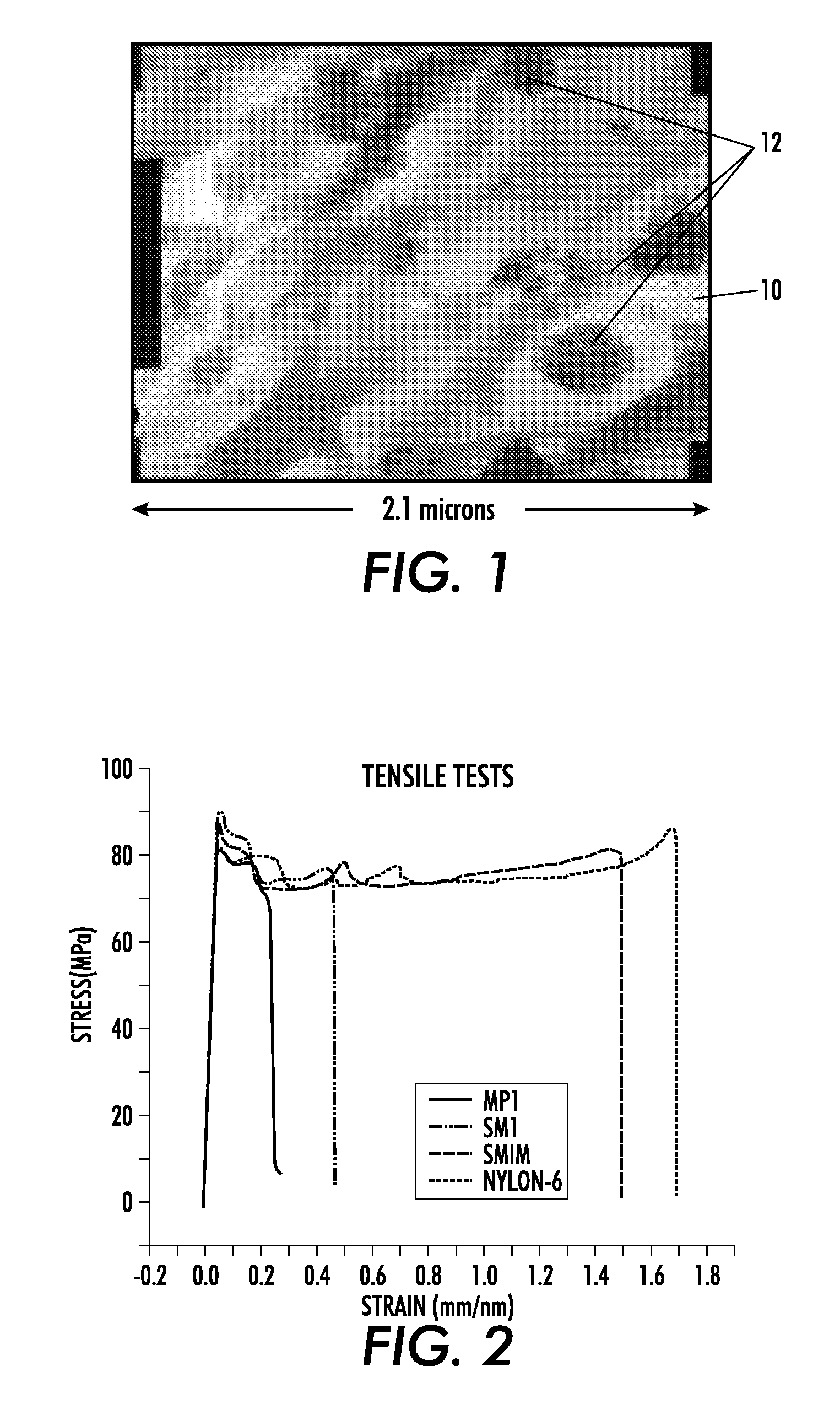Polymeric composite including nanoparticle filler
a polymer composite and nanoparticle technology, applied in the field of polymer composite including nanoparticle fillers, can solve the problems of increasing the cost of material materials, increasing the potential for a composite that is heavier than the base polymer material, and increasing the potential environmental impact of traditional polymer composites, so as to reduce the concern of loading levels, increase the potential environmental impact, and reduce the effect of harmful effluent leakage into local resources
- Summary
- Abstract
- Description
- Claims
- Application Information
AI Technical Summary
Benefits of technology
Problems solved by technology
Method used
Image
Examples
example 1
[0044] Halloysite MP-SM1, was obtained from Imerys New Zealand China Clays, which was treated by first surface modifying the material with about 0.5 to 1% benzalkonium chloride, although about 0.1 to about 2.0% may be acceptable. Treatment was followed by air milling (also known as jet milling) the surface treated halloysite (SM1M) to break-up the halloysite particles and assure dispersion thereof in the composite. All materials were dried under vacuum for 16 hours. Nylon-6 was ground in a Retsch model ZM100 grinder and combined with 5% halloysite in a Hauschild model DAC 150 FV speed mixer. The blended powder was extruded at 250° C. using a DSM Twin-Screw microcompounder under flowing nitrogen using a screw speed of 100 rpm. The composites were injection molded at 250° C. to obtain samples for mechanical testing. Instron mechanical testing was conducted per ASTM standard D638 using type IV specimen dimensions and an Instron crosshead speed of 5 mm / min. Mechanical test results are i...
example 2
[0050] In a second set of tests, various combinations of refined, treated halloysite (Ref. SM1M), polypropylene (e.g., SABIC; 86MF10; Mw>400,000) and maleic anhydride-graft-polypropylene copolymer (MA-g-PP) (Eastman Chemical Epolene43 (Maleic Anhydride 4.2 wt %); Mx>10,000) were produced using a DSM twin screw microcompounder (200° C. / Time: 5 min.) and then micro injection molded at a temperature of about 200° C. (typically in the range of about 0° C. to about 100° C. above melting point) The resulting samples were subsequently tested both mechanically and for thermal decomposition.
[0051] As a result of the testing, it was observed that an increase in decomposition temperature for the PP / HNT composites occurred, while the mechanical properties of the composite were similar to the unfilled material. More specifically, in a polypropylene nanocomposite material, the addition of about 5 weight-percent halloysite nanotubular filler resulted in an increase in decomposition temperature fr...
PUM
| Property | Measurement | Unit |
|---|---|---|
| outer diameter | aaaaa | aaaaa |
| mean average length | aaaaa | aaaaa |
| yield strength | aaaaa | aaaaa |
Abstract
Description
Claims
Application Information
 Login to View More
Login to View More - R&D
- Intellectual Property
- Life Sciences
- Materials
- Tech Scout
- Unparalleled Data Quality
- Higher Quality Content
- 60% Fewer Hallucinations
Browse by: Latest US Patents, China's latest patents, Technical Efficacy Thesaurus, Application Domain, Technology Topic, Popular Technical Reports.
© 2025 PatSnap. All rights reserved.Legal|Privacy policy|Modern Slavery Act Transparency Statement|Sitemap|About US| Contact US: help@patsnap.com

